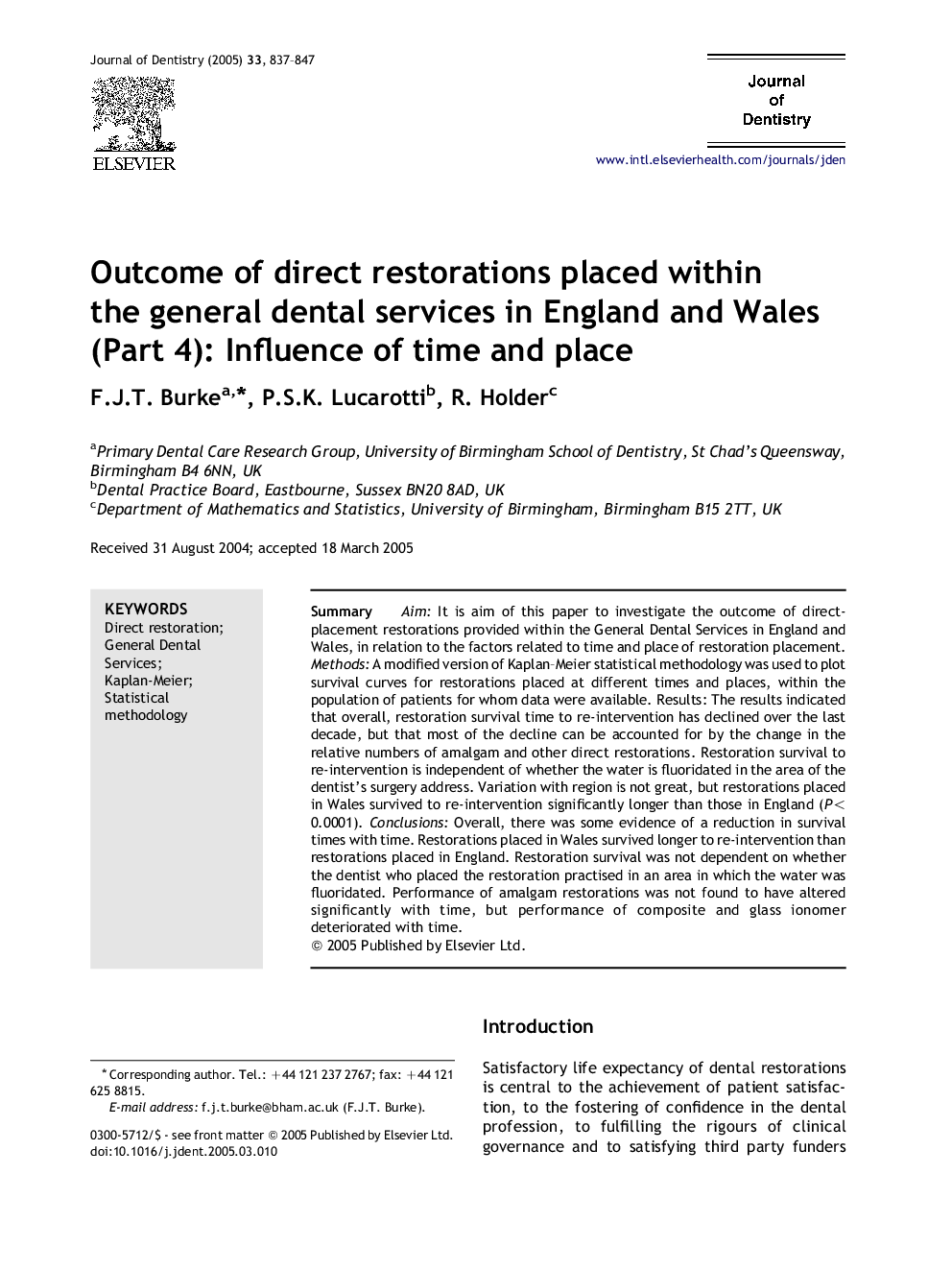| Article ID | Journal | Published Year | Pages | File Type |
|---|---|---|---|---|
| 9210908 | Journal of Dentistry | 2005 | 11 Pages |
Abstract
Aim: It is aim of this paper to investigate the outcome of direct-placement restorations provided within the General Dental Services in England and Wales, in relation to the factors related to time and place of restoration placement. Methods: A modified version of Kaplan-Meier statistical methodology was used to plot survival curves for restorations placed at different times and places, within the population of patients for whom data were available. Results: The results indicated that overall, restoration survival time to re-intervention has declined over the last decade, but that most of the decline can be accounted for by the change in the relative numbers of amalgam and other direct restorations. Restoration survival to re-intervention is independent of whether the water is fluoridated in the area of the dentist's surgery address. Variation with region is not great, but restorations placed in Wales survived to re-intervention significantly longer than those in England (P<0.0001). Conclusions: Overall, there was some evidence of a reduction in survival times with time. Restorations placed in Wales survived longer to re-intervention than restorations placed in England. Restoration survival was not dependent on whether the dentist who placed the restoration practised in an area in which the water was fluoridated. Performance of amalgam restorations was not found to have altered significantly with time, but performance of composite and glass ionomer deteriorated with time.
Related Topics
Health Sciences
Medicine and Dentistry
Dentistry, Oral Surgery and Medicine
Authors
F.J.T. Burke, P.S.K. Lucarotti, R. Holder,
